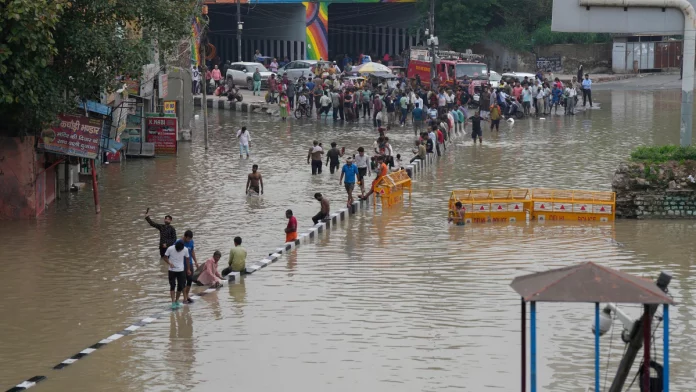In a city that rarely witnesses significant rainfall, Delhi was left reeling when it faced unprecedented floods. The deluge, triggered by incessant rains and inadequate infrastructure, caused widespread destruction, disruption, and loss of life. This article delves into the causes, impact, and aftermath of the Delhi floods, shedding light on the challenges faced by the city and the urgent need for improved disaster preparedness.
During the Delhi floods, several areas in the city were significantly affected by the deluge. While the extent of the impact varied, the following regions experienced notable consequences:
- Old Delhi: The historic area of Old Delhi, including areas like Chandni Chowk and Jama Masjid, witnessed severe flooding. Narrow streets and inadequate drainage systems exacerbated the situation, leading to waterlogging and disruption of daily activities.
- South Delhi: Many parts of South Delhi, such as Malviya Nagar, Saket, and Lajpat Nagar, were severely affected. Residential areas, markets, and main roads were submerged, causing inconvenience to residents and businesses.
- The ITO Underpass: A crucial route connecting different parts of the city, experienced significant flooding, rendering it impassable for vehicles and pedestrians. The water accumulation in the underpass resulted in traffic congestion and added to the overall chaos during the flooding.
- East Delhi: Areas like Mayur Vihar, Patparganj, and Karkardooma in East Delhi experienced significant flooding. Low-lying regions and inadequate drainage infrastructure contributed to water accumulation, leading to property damage and disruption of transportation.
- North Delhi: Several localities in North Delhi, including areas like Burari, Wazirabad, and Kingsway Camp, faced flooding issues. Low-lying colonies, especially those along the banks of the Yamuna River, were particularly vulnerable.
Causes of the Delhi Floods
The severe flooding in Delhi can be attributed to a combination of factors. First, the city experienced an unusually heavy monsoon rainfall, exceeding the capacity of the drainage system. Second, rapid urbanization and encroachment on natural water channels reduced the city’s ability to absorb excess water. Inefficient waste management practices, including clogged drains and improper garbage disposal, exacerbated the problem. Additionally, the inadequate infrastructure for rainwater harvesting and inadequate maintenance of existing stormwater drains contributed to the flooding.
Impact and Devastation
The consequences of the Delhi floods were far-reaching and devastating. Streets were transformed into raging rivers, submerging residential areas and disrupting transportation networks. Homes were destroyed, and people were forced to evacuate to safer locations. The floodwaters contaminated water sources, posing health risks to the affected population. Power outages added to the chaos, further hindering relief efforts.
Loss of life and damage to public and private property were significant. The economic impact was substantial, with businesses, markets, and infrastructure suffering severe losses. The floods also exposed the vulnerabilities of marginalized communities, as they bore the brunt of the disaster due to inadequate access to resources and infrastructure.
Post-Flood Challenges and Future Preparedness
The Delhi floods served as a wake-up call, highlighting the urgent need for improved disaster preparedness and mitigation strategies. Immediate challenges included providing relief to affected individuals, restoring essential services, and rehabilitating those who lost their homes and belongings.
To prevent future flood-related disasters, a comprehensive approach is required. This entails upgrading and expanding the drainage system, ensuring regular maintenance and cleaning of stormwater drains, and strengthening embankments. Investments in sustainable urban planning, including proper waste management and rainwater harvesting infrastructure, are crucial.
Public awareness campaigns should be launched to educate citizens about the importance of responsible waste disposal and the need to avoid encroaching upon natural water channels. Additionally, the development of early warning systems and effective emergency response mechanisms can help minimize the impact of future floods.
Collaboration between government bodies, urban planners, environmental experts, and civil society organizations is vital to implement long-term solutions and address the underlying causes of flooding in Delhi. Financial resources and technical expertise should be allocated to enhance the city’s resilience and adaptability to extreme weather events.
The unprecedented floods in Delhi were a stark reminder of the vulnerability of urban areas to extreme weather events. It is imperative for the city to take immediate action to improve its infrastructure, enhance disaster preparedness, and promote sustainable practices. By prioritizing these measures, Delhi can strive towards becoming a resilient city capable of withstanding future challenges and protecting the well-being of its residents.
🔥231










